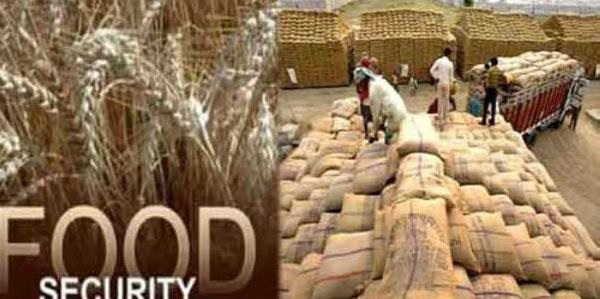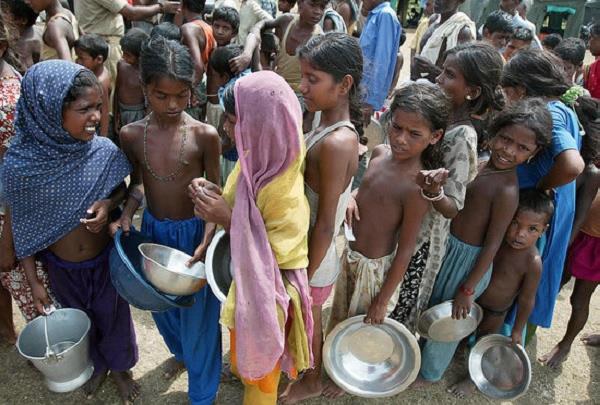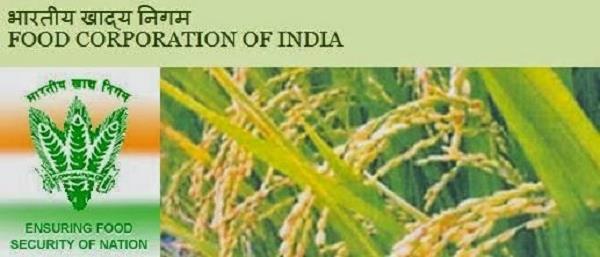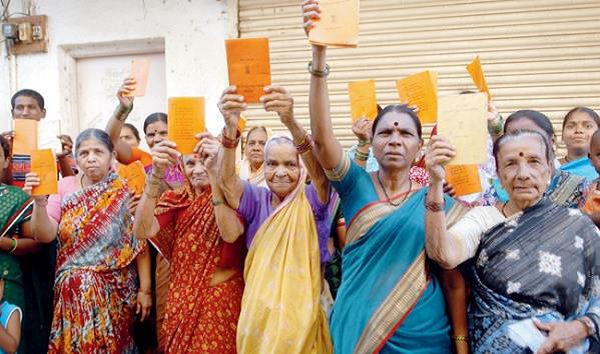
- Indian Economy - Home
- Indian Economy - Introduction
- Indian Economy - Planning
- Indian Economy - Sectors
- Indian Economy - Demography
- Indian Economy - People As Resource
- Indian Economy - National Income
- Indian Economy - Poverty
- Indian Economy - Food Security
- Indian Economy - Employment
- Indian Economy - Infrastructure
- Indian Economy - Rural Development
- Indian Economy - Money & Banking
- Economy - Government Budget
- Indian Economy - Consumer Rights
- Indian Economy - Reforms
- Indian Economy - Open
- Indian Economy - Micro Economics
- Indian Economy - Macro Economics
- Economy - Sustainable Development
Indian Economy - Food Security
Introduction
-
Food Security is a comprehensive term that includes −
Availability
Accessibility
Affordability of food for all
Availability of Food means, there should be enough food for everyone irrespective of his or her income; no one should starve (from hunger). It also includes the availability of food in governments stock.

Accessibility means, every person can have it. Or in other words, its price should not be so high that only a class of people can afford it.
Affordability means, a person should have sufficient money to buy a balanced food for himself/herself and/or for his/her family.
Problems of Food Insecurity
A large section of people in India is facing food insecurity, as they dont have affordability and accessibility to food even for two times a day.
In addition to this, natural calamities such as drought, heavy rainfall, earthquake, cyclone further increase the level of food insecurity.
Natural calamities directly affect the production of food and lead to food shortage. The demand remains high, but the supply level falls down. Further, natural calamities cause a rise in the price of food, which is beyond the affordability of the poor.
-
Food insecurity normally leads to Famine. Famine, in fact, is a curse to any society. It brings with it problems such as −
- Food insecurity
- Diseases
- Unemployment, etc.
Vulnerable Groups
-
The most vulnerable groups that have been suffering with the problem of food insecurity in India are −
The people who dont have their own land (for agriculture).
The traditional artisans.
The workers (working on daily wages especially on agricultural land).
The seasonal workers (who finds work only in certain seasons).
Self-employed workers such as rickshaw-pullers and hawkers.
The poor people in India normally belong to the Scheduled Castes, the Scheduled Tribes, or other backward classes. There is also a section of poor people in India, who have migrated from neighbouring countries.

These poor people are more vulnerable to natural calamities or any other disaster.
Hunger Problem
Hunger is another parameter of measuring food insecurity. It includes not only the unavailability of food, but it also reflects the overall poverty of a society.
Hunger could be temporary or seasonal (because of calamity) or permanent (chronic hunger).
Chronic hunger illustrates permanent food insecurity, inadequate food supply, and inability of people to buy food.
Seasonal hunger, on the other hand, occurs temporarily. It is normally related to cycles of food growing and harvesting. For example, people suffering with this problem have inadequate food availabilities for only part of the year.
As per the latest government report, the percentage of seasonal hunger, as well as chronic hunger, has declined over the years in India.
Regions of Food Insecurity
Some Indian states such as Odisha, Bihar, Uttar Pradesh, West Bengal, Jharkhand, Chhattisgarh, Madhya Pradesh, and Maharashtra have extreme levels of food insecurity.
-
There are still many districts (of a few states), which have permanent food insecurity and famine-like conditions. The districts are −
Kalahandi and Kashipur districts of Odisha.
Palamau district of Jharkhand.
Baran district of Rajasthan, etc.
Development
India, after independence, experienced many remarkable achievements. For example, the introduction of green revolution increased the agricultural produce many folds. But the substantial increase in the production of grains (especially rice and wheat) is not equal across the country.
The states Punjab and Uttar Pradesh achieved high growth rate; on the contrary, Jharkhand, Assam, Tamil Nadu, Uttarakhand, recorded decrease in their food grain production (for the year 201213).
In spite of all the disparities (discussed above), over the last few decades, India is self-sufficient in the production of food grains.
To mitigate adverse conditions, the Indian government has come up with initiatives such as special food security system (maintaining buffer reserves of food stock) and public distribution system.
Food Security and Governance
Government of India set up a special agency Food Corporation of India (FCI). The agency is responsible for the execution of food policies of Central Government.

FCI purchases food grains (wheat and rice) from the farmers in states where there is surplus production.
FCI purchases food grains on pre-determined rates (fixed by the government in advance). This price is known as Minimum Support Price.
Later, the government makes the food grains available (from the buffer stock) to the areas where the production of food grains was insufficient and to the poor section of the society.
Government provides a platform where the stock is sold at a lower price (lower than the market rate), which is known as Issue Price.
The system through which FCI makes the food grains available to the poor society is known as Public Distribution System (PDS). The ration shops in most localities, villages, towns, and cities serve as channels and facilitate this distribution system.

The government issues ration cards and the people who have low income can apply and get ration cards from the ration card offices and avail the benefits of PDS.
Only those people, who hold ration cards can purchase subsidised food.
-
The high levels of food insecurity forced the Indian Government to introduce three food intervention programmes during the 1970s. The programmes are as follows −
Public Distribution System (PDS) for food grains (though it was already existing, the execution of responsibilities was strengthened further).
Integrated Child Development Services (ICDS).
Food-for-Work (FFW).
Currently, there are dozens of such programmes functional across the country.
Targeted Public Distribution System was introduced in 1997. This system aims to focus on the
Poor in all areas.
For this system, different prices are fixed for the poor and non-poor group.-
The following two schemes have been launched recently −
Antyodaya Anna Yojana (AAY)
Annapurna Scheme (APS)
Reasons of Food Insecurity
In spite of the various initiatives for food security in India, there are many regions suffering from food insecurity.
-
Some of the major reasons for the failure of these initiatives are −
Poor implementation
Corruption (ration shop owners often sell the food grains of better quality to other buyers and provide food grains of poor quality to the ration card holders);
The process involved in availing a ration card is a lengthy one; etc.